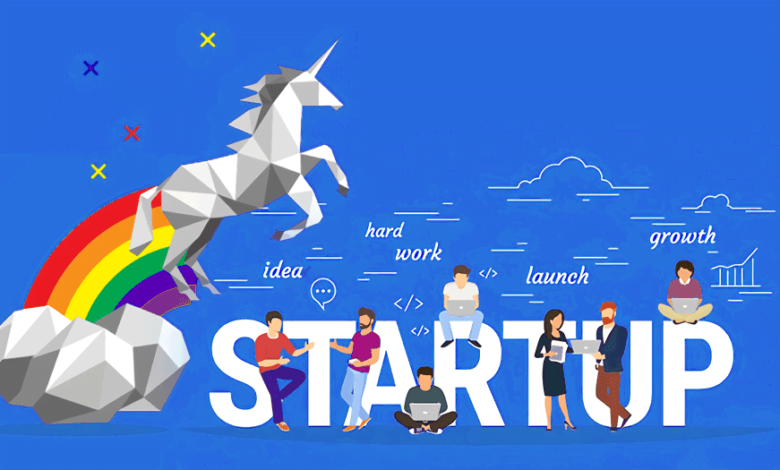Bitten by the startup bug, Indians living in the U.S. is becoming entrepreneurs.

At the start of his job at Wipro in Bengaluru, an engineer from Datta Meghe College in Mumbai didn’t have any “plans” to start his own company. A year into the job, he moved to the United States, where he worked for big companies like G.E., Qualcomm, LinkedIn, and Yelp. He worked on business software applications for these companies. This is when he saw a chance to build an enterprise-monetization platform or a platform to manage subscriptions.
In 2016, Nair started RecVue, a company that helps businesses with recurring billing and revenue. Cota Capital, Epic Ventures, and Long Light Capital are three venture capital (V.C.) funds in the United States. Between 2017 and 2021, the startup raised about $20 million from them. One hundred people work for the Palo Alto, California-based company now, and Nair now has a lot of big “plans.”
“We want to be the best at this,” he says.
IIT-BHU engineer Shub Bhowmick worked at Britannia Industries in Mumbai for a few years after he graduated. He was making biscuits there.
“It wasn’t fun,” Bhowmick says.
His first job was at Infosys in 1998. Three years later, he moved to the U.S. on a job visa. In 2013, Bhowmick started Credence with his BHU classmate Sumit Mehra and Shashank Dubey, who he had met at Mu Sigma. There are now more than 1,500 people working for the California-based analytics platform, and it works with 30 to 40 Fortune 500 companies in the retail and hospitality sectors.
They are two of many Indian immigrants in the U.S. who start businesses, mainly in the B2B space. Nair and Bhowmick are just two of many. They also include Baiju Bhatt, the CEO of Robinhood; Rohan Seth, a co-founder of social audio app Clubhouse and Apoorva Mehta, the CEO of grocery delivery service Instacart; they are all young people want to help people make money through technology.
According to Ashish Gupta, who co-founded research and data insights firm Benori Knowledge in 2019, about 25% of his IIT Delhi classmates who graduated in 1995 and moved to the U.S. have started their businesses in the last few years. Benori Knowledge is based in the Indian city of Gurugram.
So, what’s making this happen?
Shorter time between moves
To be sure, Indian entrepreneurs have been around the U.S. startup scene before. They came to the U.S. in the 1980s. At the same time as Sun Microsystems, Vinod Khosla founded Sun Microsystems in 1982 with his American co-founders. Sabeer Bhatia founded Hotmail in 1996 and sold it to Microsoft in 1999. Other businesses were set up before the turn of the century, such as an Internet-equipment manufacturer co-founded by Gururaj Deshpande Sycamore Networks. Sycamore Networks quickly went out of business because it didn’t have new ideas.
In the last few years, more and more Indians are starting businesses, which is also shown by the number of unicorns they have made. In the United States, Indian entrepreneurs have made 90 unicorns in the last eight to 10 years, which means they have made a lot of money.
A big reason for this is that the time it takes Indians to change jobs and start their businesses has more than halved. It used to take two decades for Indians to create their businesses after moving to the United States, and now, it takes less than ten years for them to start their businesses most of the time.

Suppose you’re a new entrepreneur in the U.S. In that case, you can use the India playbook more because most businesses have small but significant research and development (R&D) centres in Bengaluru or Hyderabad.
There are still many B2B ideas being worked on by Indians, but they aren’t interested in the more complex and costly B2C ideas. This is slowly but surely changing.
However, even though there has been a significant rise in the number of businesses started by Indians, two essential things are still missing. The share of companies started by Indian women in the United States is minimal, so this is the first thing to note. Second, Indian startups may not grow ideas like Amazon, Facebook, Twitter, Google, Airbnb, or Uber, so they don’t always make businesses with an eye on the global market.
But that could change soon.
In Sivakumar Ramamurthy’s words, “The tools have changed, the ecosystem has changed, and most importantly, the way we think about data has changed.” Now, there’s a good chance that Indians will start businesses that can grow.
Ramamurthy worked for chipmaker Intel for almost 30 years before starting Pragya Ventures in 2019. Pragya Ventures is an incubation and investment platform under which he works with entrepreneurs, mostly Indians, who want to start businesses in the United States and work with him.
More people could play in the market.
More is possible in the U.S. than in India, but that’s not the only reason. More than 2,000 VC funds in the U.S., but only 100 in India. In 2020 alone, they’ll invest more than $164 billion in more than 10,000 startups, says Pankaj Jethwani, an executive vice president at W Health Ventures, a Boston-based VC firm. People in the United States have a lot more money to spend on things like health care than people in India (at approximately USD4 trillion as against USD400 billion in India).
For digital-health company founders, the playbook for going to market in the United States is more mature than in India, says Jethwani, from India.
But even though there are so many opportunities for Indians in the U.S., the first thing they do is go to school and get a job.
Like most people who start businesses in the United States, Sachin Aug, the founder and CEO of a company in Alpharetta, Georgia called NLB Services, studied management in the United States and worked for G.E. His business idea came about during the Lehman Brothers collapse and the financial meltdown of 2008-09, when he saw an opportunity in the fragmented talent market and upskilling. Many businesses, like banks and pharma companies, use NLB, and it also works with logistics and supply-chain companies.
“During the first few years, I had to change. I had to learn how to do my own thing and understand different parts of the country.” As soon as you understand that “access and openness are good,” says Aug.
In the past, Bhowmick had used the typical engineering-plus-MBA path to rise the corporate ladder in consulting firms. This was a far cry from making biscuits in Britannia when he was in Mumbai, where he worked at a bakery. As long as he worked in the United States, he always wanted to start his own business. Because of a growing need for analytics and a lack of people skilled in the field, he and two other Indians left their jobs to start Credence. Though they didn’t have a problem with money, they had difficulty getting the first few clients.
During the first few years, Bhowmick and his team had to do a lot of proofs-of-concept, diagnostics, and discount a lot of their work.
Slowly, Credence started making it into the big leagues, and they started getting big clients and getting more and more business from them repeatedly. “It’s about making sure we hire the right people and build that one Credence culture,” he says, adding that it’s essential to do that.

Nair, the sole owner of RecVue, had to take care of everything from sales and marketing to engineering and human resources at the start. Then, he had to put it all together. In my mind, the best thing wins. But only if it’s done right will it succeed. Nair will take a lot of work to get the technology right and figure out the market.
The Indian-American founder and CEO of Better.com, a mortgage platform, learned this the hard way. Market changes can lead to layoffs or even shutdowns, which are challenging. Vishal Garg fired 900 or 9% of his 10,000-employee staff over a Zoom call in December 2021. SoftBank led a capital infusion of about $750 million during this time.
It’s been hard for first-time Indian entrepreneurs in the U.S. to find good advisors, mentors, and board members. MR Rangaswami is the founder of Indiaspora, a network of global Indian-origin business leaders in California in 2012. However, this is becoming less of a problem because V.C. teams, which were mostly made up of Americans, now have a lot of Indians as well. This is true of some of the most prominent venture investors, like SoftBank, Insight Partners, Sequoia Capital, and Andreessen Horowitz.
Safety first, then startups.
It takes more patience and perseverance for Indian-born entrepreneurs to make even the best ideas work because they haven’t grown up in that country.
They want to get a job that pays more than they can earn in India, and that’s their primary goal here.” The general partner at a venture capital firm says that even if someone wants to start a business early, there’s not much they can do until their H1B visa turns into a green card, which takes about two years. And it could take up to 10 years.
Founder Nair of RecVue says that “the paperwork” can be “distracting.” Bhowmick got his green card in 2008. Gupta of Benori Knowledge, on the other hand, sees it as a good thing.
It can take that long to make friends, network, and learn about the market in a new country. Also, in the U.S., the average age of a successful founder (with few exceptions) is in their late 30s to early 40s, unless there is an excellent reason not to. They aren’t late, he says.
In the early days of knowledge process outsourcing (KPO), Gupta was one of the first people to participate in the act. He was the COO of an analytics company called Evalueserve. Before that, he worked for McKinsey. If you want to study liberal arts and science, Ashoka University in Haryana and Plaksha University in Punjab are two schools he helped start.
Getting a better life is why people move to the United States. While they are willing to take risks early on, unlike their predecessors, they now have a group of Indian-born CEOs and founders who can help them. More and more people are on the list: Arvind Krishna, CEO of IBM; Sundar Pichai, CEO of Google parent Alphabet; and Shantanu Narayen, CEO of Adobe.
When Jeff Bezos, Larry Page, and Mark Zuckerberg started their businesses, there were already examples of Americans who had done big companies all over the world. As a result, many of them thought about starting a business while still in college. Immigrants have to wait for paperwork before they can turn ideas into businesses.
As we talked about earlier, Indian-born women who start businesses in the United States are a rare breed. But Sujatha Dwarakanath, the founder and CEO of Kaya17, is one of the few people. As a medical diagnostics expert, she worked for Bayer Diagnostics, Thermo Fisher Scientific, and Roche Diagnostics for almost 30 years in the U.S. In 2020, she went out on her own and worked for herself. For Covid-19, she has come up with a saliva-based 15-minute rapid test that can be done in that time.
Tech-focused VCs aren’t as interested in funding medical businesses because it can take a long time for them to get approved by the U.S. Food and Drug Administration, which Dwarakanath says makes it hard for them to get money for them (FDA). So, she went with the US Small Business Innovation Research (SBIR) grants, which give small businesses up to $150,000 to help them test new ideas. To get the funding, Dwarakanth had to answer a request for proposals from the U.S. Department of Defense about finding anthrax.
If you want to make the concept work, the army gave you $1 million to do so. Dwarakanath, born in Bengaluru and now lives in the United States, says that.
Being a woman from South Asia and India made it difficult for her to develop new ideas but not get them. She says that “tech V.C.s don’t have the patience to wait for regulatory approvals, and they usually don’t look at an idea that might take more than six months or a year to get to market.”
One of the V.C. funds asked her about the market for her product when the pandemic was over, and she didn’t know the answer. It’s clear where Kaya17 is going, says Dwarakanth. “It’s a way to test for diseases, and Covid-19 is just one of them,” she says.
Dwarakanath has a 12-person team that will soon grow to 20 as she wants to make two three million test kits a month. These tests are called PCR and rapid antigen, and there are two types of Covid-19 tests: When Dwarakanath says that Kaya17’s rapid-antigen test can match the accuracy of PCR, we should be careful.
She thinks the FDA will give the product the go-ahead soon. The startup also wants to develop a test for influenza and Covid-19, which could be the next step. What if you get the flu? You wouldn’t know if it was Covid-19 or the regular flu. Our $15 test will tell you that. It has been approved for emergency use, but the FDA hasn’t approved it yet. Dwarakanath says that it takes about 15 minutes to finish the test.
Given the size and scope of the American healthcare market, there are no shortages of chances to make money. Abhinav Shashank is the co-founder and CEO of Innovaccer, which connects healthcare data to make unified patient records. For more than a year, Innovaccer has been in Silicon Valley.
Gaurang Choksi, the CEO and founder of Violet Health, wants to make identity-centred health care available to everyone. Sunil Wadhwani, the founder of W Health Ventures, also helped start iGate Technologies and Mastech Digital. This is what the V.C. firm wants to do: invest in new ways to care for people, tech and new ideas. It thinks Indians will bring knowledge from other countries, which is part of W Health Ventures’ argument.
Another fund, called the Neythri Futures Fund, is based in California and has 200 Indian-born women as investors. They want to help South Asian and Indian women start businesses. In June 2021, the fund was set up. Only 4.9 per cent of its V.C. partners in the United States are women, and less than 7.5 per cent of these partners are from South Asian or Indian backgrounds.

The safest thing to do is not do anything.
Most of these businesses are aimed at companies, not end-users. People who start businesses in America have a lot of people to look up to, which makes it easier for them.
People in India like to watch Hollywood movies, speak English, and act like Americans, says the man, who lives in the United States. “We use the same things that are made in the United States.” That isn’t true, he says.
Rao thinks it’s easier for Indians living in the United States to understand the needs of businesses than to learn about American culture. Also, Indians are very good at technical skills, and a lot of engineers at global tech companies are Indians. Even so, sales and marketing skills have taken a long time to come by.
It’s one of the best business schools for managing brands. Many Indians have also gone to school here. It’s not very common for them to work for companies like Procter & Gamble or The Clorox Company and try to sell their products in the United States.
It’s hard to understand the American consumer if you haven’t lived here for the first 25 years of your life, says Bhowmick. Second-generation Indian Americans, on the other hand, can do it better.

The bottom line is:
It can take time to learn the culture and nuances of the place you’re moving to, but the new wave of tech changes promises to give immigrants a clean slate from which to start businesses. Many people in the United States were in charge of web 1.0 and web 2.0. On the other hand, immigrants now have a better chance of making something big in some of the new areas like web 3.0 and metaverse (non-fungible tokens).
Due to the large Indian diaspora living in the United States, it will be easier for their younger generations to find mentors and guides to start businesses.
Early founders who took risks have shown the way. “For a foreigner to start a business in India, it’s a lot more difficult than for an Indian to start a business in the U.S.,” says Aug, a manager at NLB Services.
As you can see, it doesn’t matter where you come from anymore, and it’s about what you can bring to the table now.
edited and proofread by nikita sharma




